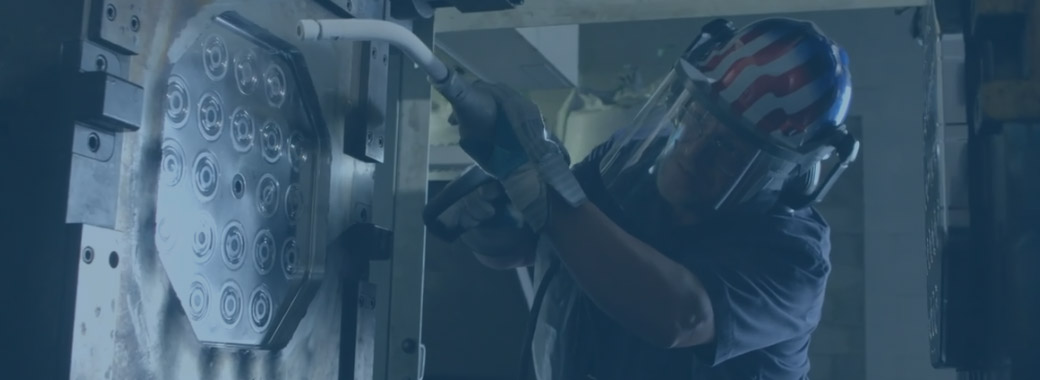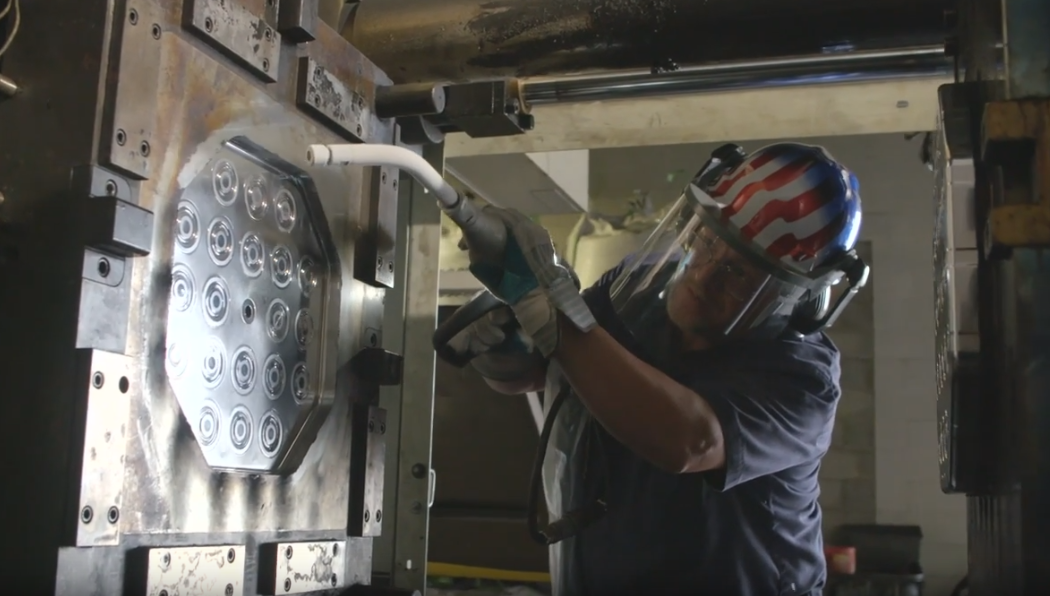Plastic
As any plastics professional knows, molds and the plastic coming into them are heated to extreme temperatures. This generates a gas that liquefies and sticks to the mold and can be tough to remove. Additionally, vents at the end-of-fill get clogged from the buildup of gases. These vents need to remain open and unobstructed in order to help keep the mold clean. This gas can damage the mold and effect product quality.
In addition to being very labor intensive, traditional cleaning such as abrasive blasting, wiping with chemicals or solvents, and wire brushing, requires production to stop so molds can be taken out and disassembled. With dry ice blasting molds can be cleaned while they are hot and still in the press.This greatly reduces, and often eliminates downtime due to cleaning. Because of this equipment can be cleaned more frequently, which helps keep vents open. The media, dry ice pellets, are non-abrasive, so there is no damage to the molds.
Extrusion screw and nozzle cleaning is often tedious and can require long production stops. Dry ice blasting reduces this downtime by allowing screws to be cleaned right out of the barrel. The heat from the barrel helps enhance the thermal effect caused by the dry ice pellets. The contaminant becomes more brittle, thus easier to remove.


